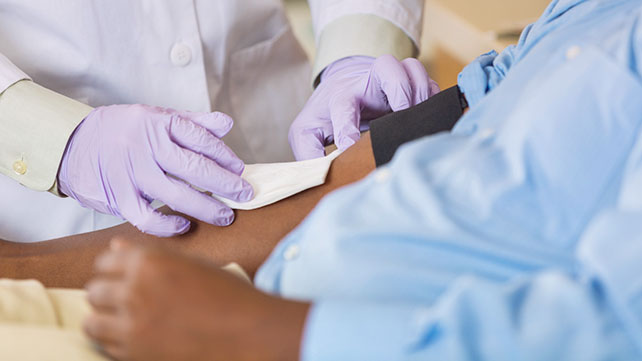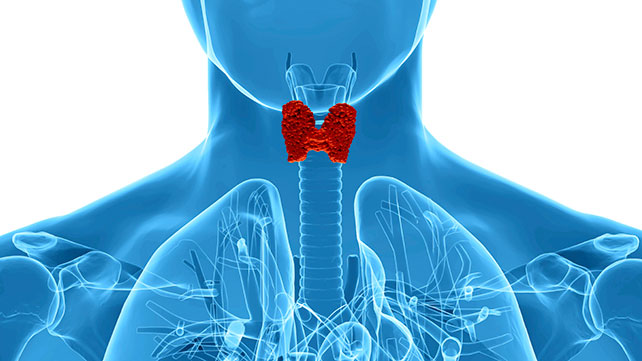
Hypothyroidism is a condition where the thyroid gland doesn’t produce or make enough of two thyroid hormones: triiodothyronine (T3) and thyroxine (T4). The thyroid gland is a small organ at the base of the throat that’s responsible for regulating your metabolism. The pituitary gland secretes a thyroid-stimulating hormone (TSH) that triggers the thyroid to make and release T3 and T4.
Primary hypothyroidism occurs when the thyroid doesn’t make enough T3 and T4 despite being instructed to do so by the pituitary gland. Secondary hypothyroidism occurs when there’s too little TSH stimulating the thyroid gland. Common symptoms of the condition include fatigue, body pain, palpitations, and menstrual irregularity. Although there may be no cure for hypothyroidism, there are ways to control it.
Medications and Supplements
Using synthetic versions of the thyroid hormones is one of the most commonly used treatments for hypothyroidism. Liothyronine (Cytomel, Tertroxin) is a synthetic version of T3 and levothyroxine (Synthroid, Levothroid, Levoxyl) is a substitute for T4.
If your hypothyroidism is caused by an iodine deficiency, your doctor may recommend an iodine supplement. Additionally, magnesium and selenium supplements may help improve your condition. As always, ask your doctor before taking any supplements.
Diet
Although many foods can improve thyroid function, changes to your diet are unlikely to replace the need for prescription medication.
Nuts and seeds rich in magnesium and selenium, including Brazil nuts and sunflower seeds, can be beneficial to your thyroid health.
Dietary supplements, like iron and calcium pills, and eating a high-fiber diet can reduce the absorption of certain thyroid medicines. In general, avoid eating soy and soy-based foods, kale, broccoli, cauliflower, and cabbage as these foods can inhibit thyroid function, especially when eaten in raw form.
Exercise
Hypothyroidism can trigger muscle and joint pain and can leave you feeling fatigued and depressed. A regular exercise routine can reduce many of these symptoms.
Unless your doctor advises you against certain activities, no exercises are off-limits. Still, the following activities may be especially helpful for hypothyroidism.
Low-impact workouts: One of the common symptoms of hypothyroidism is muscle and joint pain. Biking, swimming, yoga, Pilates, or walking at a brisk pace are just some low-impact activities that you can incorporate into your everyday routine.
Strength training: Building muscle mass, either by lifting weights or with exercises such as push-ups and pull-ups, can reduce any feelings of sluggishness or lethargy. Having a higher muscle mass increases your resting metabolic rate, which can help counter any weight gain and pains caused by hypothyroidism.
Cardiovascular training: Hypothyroidism has been correlated with a higher risk of cardiac arrhythmias, or an irregular heartbeat. Improving your cardiovascular health with regular exercise can help protect your heart.
Through medications, diet, and exercise, you can improve your thyroid health and manage your hypothyroidism.
Read more in Hypothyroidism ResourcesAmerican Thyroid Association. (2014). Hypothyroidism. Retrieved from http://www.thyroid.org/wp-content/uploads/patients/brochures/ata-hypothyroidism-brochure.pdf
Ciloglu, F., Peker, I., Pehlivan, A., Karacabey, K., İlhan, N., Saygin, O., & Ozmerdivenli, R. (2005). Exercise intensity and its effects on thyroid hormones. Neuroendocrinology Letters, 26(6), 830–834. Retrieved from http://www.ncbi.nlm.nih.gov/pubmed/16380698
Sathyapalan, T., Manuchehri, A.M., Thatcher, N. J., Rigby, A. S., Chapman, T., Kilpatrick, E. S., & Atkin, S. L., (2011). The Effect of Soy Phytoestrogen Supplementation on Thyroid Status and Cardiovascular Risk Markers in Patients with Subclinical Hypothyroidism: A Randomized, Double-Blind, Crossover Study. The Journal of Clinical Endocrinology & Metabolism, 96(5). Retrieved from http://press.endocrine.org/doi/full/10.1210/jc.2010-2255
Triggiani, V., Tafaro, E., Giagulli, V. A., Sabbà, C., Resta, F., Licchelli, B., & Guastamacchia, E. (2009). Role of iodine, selenium and other micronutrients in thyroid function and disorders [Abstract]. Endocrine, Metabolic & Immune Disorders-Drug Targets, 9(3), 277-94. Retrieved from http://www.ncbi.nlm.nih.gov/pubmed/19594417



